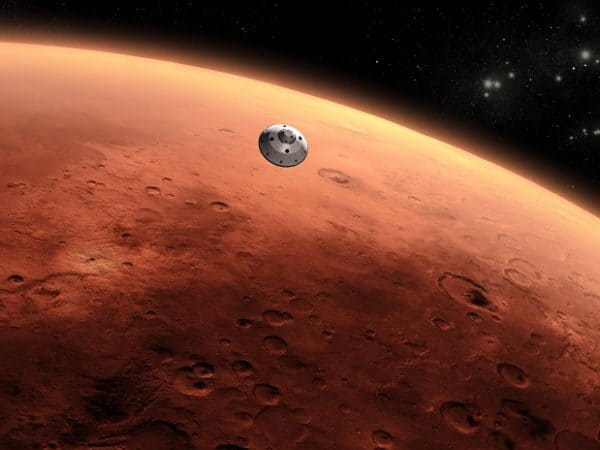Marsquakes may prove to be the key to life on the Red Planet, scientists say

 Marsquakes is a phenomenon that causes frictionally driven H2 formation during rock fracturing, and according to scientists it’s a potential biosignature for life on Mars.
Marsquakes is a phenomenon that causes frictionally driven H2 formation during rock fracturing, and according to scientists it’s a potential biosignature for life on Mars.
When earthquakes cause rock to grind against rock under massive pressure, what comes out is … another kind of rock. But this one has now been proven to contain hundreds of times more trapped hydrogen gas than other rocks, so go the findings from a new study appearing in the journal Astrobiology.
“Previous work has suggested that hydrogen is produced during earthquakes when rocks fracture and grind together. Our measurements suggest that enough hydrogen is produced to support the growth of microorganisms around active faults,” says Yale geomicrobiologist Sean McMahon at Yale University.
McMahon, together with colleagues from the University of Aberdeen in Scotland and Brock University in St. Catherines, Ontario, analyzed rock samples from locations around the world, including the Outer Hebrides of Scotland, Canada and South Africa, and found a substantial amount of hydrogen gas in the rocks formed by brittle fracturing along the Earth’s fault planes, enough to feed a type of bacteria called hydrogenotrophs. These microbes survive by feeding off the reaction between oxygen and hydrogen gas and are known to live deep below the Earth’s surface. Recent studies have shown that a surprising 20 per cent of the Earth’s biomass may be found underground.
This new study indicates that life may be thriving under similar conditions on Mars.
“The oxidation of molecular hydrogen (H2) is thought to be a major source of metabolic energy for life in the deep subsurface on Earth, and it could likewise support any extant biosphere on Mars,” say the study’s authors. “This study strengthens the case for the astrobiological investigation of ancient martian fracture systems.”
The problem is that because there is scant evidence of currently active volcanoes or plate tectonics on Mars, earthquakes – or marsquakes – are likely more of a rare occurrence than on Earth. A 2012 investigation of photographs from NASA’s Mars Reconnaissance Orbiter found that tracks made by large boulders that fell off a Martian cliff are indications of at least some recent seismic activity. But we will know substantially more on that front once NASA’s InSight spacecraft makes it to Mars. Originally set to launch in December, 2015, the InSight robotic Mars lander has been delayed by a leak in the spacecraft’s vacuum seal, pushing the date back to May of 2018.
InSight – standing for Interior Exploration using Seismic Investigations, Geodesy and Heat Transport – will land a seismometer and heat transfer probe on the Red Planet’s surface to study Mars‘ geology and obtain further clues into the evolution of rocky planets, including Earth. InSight will also be able to deliver the goods on Mars‘ seismic activity, thereby telling us more about the possibility of hydrogenotrophs living underground.
“Mars is not very seismically active, but our work shows that ‘Marsquakes’ could produce enough hydrogen to support small populations of microorganisms, at least for short periods of time,” says McMahon. “This is just one part of the emerging picture of the habitability of the Martian subsurface, where other sources of energy for life may also be available.”

